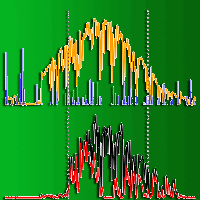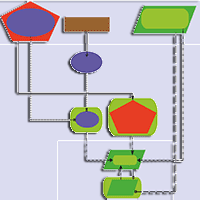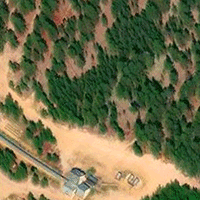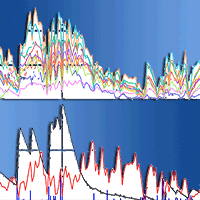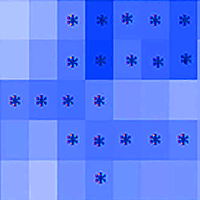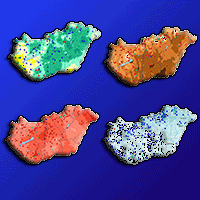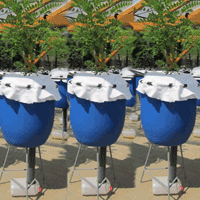Climatic water availability is a major determinant of forest structure and composition, while drought events may severely impact forest dynamics. In recent decades, an increasing number of severe drought events has been reported in forests around the world. In the future, climate models project increasingly dry conditions in many temperate regions. Various tools have been applied to better understand the effects of drought on forests, such as dendrochronological analyses, climatic trend analyses and dynamic models. With these approaches, water availability is often summarized as a single scalar, termed a drought or aridity index. As droughts are complex phenomena, such indices are always associated with a loss of information. Many different such indices exist, and have been developed for various purposes. This review asks whether some of these indices are more suitable than others to quantify water availability in temperate forests. In a first step, the rationale and theoretical background of different drought indices are spelled out and compared among each other. Then, evaluations and intercomparisons of drought indices from the literature are reviewed. The implementation of drought indices in dynamic forest models is also discussed. Finally, two current research questions are identified: the role of dry air for physiological drought, and the suitability of various drought indices under climate change. It appears from this review that indices accounting for evaporative demand generally perform better than indices based on precipitation alone. When comparing sites with different edaphic conditions, indices accounting for soil moisture storage are more suitable. Nevertheless, results from intercomparisons show considerable divergence, and it is not possible to clearly favor one index. Furthermore, a differential response of tree species to different drought indices is often observed, although no clear pattern emerges from this comparison. More intercomparisons of indices, across climates and species, might provide valuable knowledge. Another key finding is that the properties of indices also depend on choices regarding, e.g., the calculation of evaporative demand, or the underlying water balance model. Reporting such methodological details could greatly increase the value of future evaluations of drought indices.
Keywords
, , , ,
Citation
Speich MJR (2019). Quantifying and modeling water availability in temperate forests: a review of drought and aridity indices. iForest 12: 1-16. - doi: 10.3832/ifor2934-011
Academic Editor
Carlotta Ferrara
Paper history
Received: Jul 28, 2018
Accepted: Nov 13, 2018
First online: Jan 10, 2019
Publication Date: Feb 28, 2019
Publication Time: 1.93 months
© SISEF - The Italian Society of Silviculture and Forest Ecology 2019
Open Access
This article is distributed under the terms of the Creative Commons Attribution-Non Commercial 4.0 International (https://creativecommons.org/licenses/by-nc/4.0/), which permits unrestricted use, distribution, and reproduction in any medium, provided you give appropriate credit to the original author(s) and the source, provide a link to the Creative Commons license, and indicate if changes were made.

Breakdown by View Type
(Waiting for server response...)
Article Usage
Total Article Views: 52539
(from publication date up to now)
Breakdown by View Type
HTML Page Views: 40933
Abstract Page Views: 5559
PDF Downloads: 5220
Citation/Reference Downloads: 26
XML Downloads: 801
Web Metrics
Days since publication: 2531
Overall contacts: 52539
Avg. contacts per week: 145.31
Article Citations
Article citations are based on data periodically collected from the Clarivate Web of Science web site
(last update: Mar 2025)
Total number of cites (since 2019): 25
Average cites per year: 3.57
Publication Metrics
by Dimensions ©
Articles citing this article
List of the papers citing this article based on CrossRef Cited-by.
(1)
Allen CD, Breshears DD, McDowell NG (2015)On underestimation of global vulnerability to tree mortality and forest die-off from hotter drought in the Anthropocene. Ecosphere 6: 129.
CrossRef |
Gscholar
(2)
Ameztegui A, Cabon A, De Càceres M, Coll L (2017)Managing stand density to enhance the adaptability of Scots pine stands to climate change: a modelling approach. Ecological Modelling 356: 141-150.
CrossRef |
Gscholar
(3)
Anfodillo T, Petit G, Sterck F, Lechthaler S, Olson ME (2016)Allometric trajectories and “stress”: a quantitative approach. Frontiers in Plant Science 7: 1681.
CrossRef |
Gscholar
(4)
Bagnouls F, Gaussen H (1957)Les climats biologiques et leur classification [Bioclimates and their classification]. Annales De Géographie 66 355: 193-220. [in French]
CrossRef |
Gscholar
(5)
Barkaoui K, Navas ML, Roumet C, Cruz P, Volaire F (2017)Does water shortage generate water stress? An ecohydrological approach across Mediterranean plant communities. Functional Ecology 31: 1325-1335.
CrossRef |
Gscholar
(6)
Bassett JR (1964)Tree growth as affected by soil moisture availability. Soil Science Society of America Journal 28: 436-438.
CrossRef |
Gscholar
(7)
Bhuyan U, Zang C, Menzel A (2017)Different responses of multispecies tree ring growth to various drought indices across Europe. Dendrochronologia 44: 1-8.
CrossRef |
Gscholar
(8)
Braun S, Remund J, Rihm B (2015)Indikatoren zur Schätzung des Trockenheitsrisikos in Buchen- und Fichtenwäldern [Indicators to estimate drought risk in beech and spruce forests]. Schweizerische Zeitschrift für Forstwesen 166: 361-371. [in German]
CrossRef |
Gscholar
(9)
Bréda N, Huc R, Granier A, Dreyer E (2006)Temperate forest trees and stands under severe drought: a review of ecophysiological responses, adaptation processes and long-term consequences. Annals of Forest Science 63: 625-644.
CrossRef |
Gscholar
(10)
Breshears DD, Cobb NS, Rich PM, Price KP, Allen CD, Balice RG, Romme WH, Kastens JH, Floyd ML, Belnap J, Anderson JJ, Myers OB, Meyer CW (2005)Regional vegetation die-off in response to global-change-type drought. Proceedings of the National Academy of Sciences USA 102: 15144-15148.
CrossRef |
Gscholar
(11)
Budyko MI (1974)Climate and life. Academic Press, New York, USA, pp. 507.
Gscholar
(12)
Bugmann H, Cramer W (1998)Improving the behaviour of forest gap models along drought gradients. Forest Ecology and Management 103: 247-263.
CrossRef |
Gscholar
(13)
Bussotti F, Pollastrini M (2017)Traditional and novel indicators of climate change impacts on European forest trees. Forests 8: 137.
CrossRef |
Gscholar
(14)
Cavin L, Mountford EP, Peterken GF, Jump AS (2013)Extreme drought alters competitive dominance within and between tree species in a mixed forest stand. Functional Ecology 27: 1424-1435.
CrossRef |
Gscholar
(15)
Chaves MM, Maroco JP, Pereira JS (2003)Understanding plant responses to drought from genes to the whole plant. Functional Plant Biology 30: 239-264.
CrossRef |
Gscholar
(16)
Clark JS, Iverson L, Woodall CW, Allen CD, Bell DM, Bragg DC, Amato AW, Davis FW, Hersh MH, Ibanez I, Jackson ST, Matthews S, Pederson N, Peters M, Schwartz MW, Waring Zimmermann KMNE (2016)The impacts of increasing drought on forest dynamics, structure, and biodiversity in the United States. Global Change Biology 22: 2329-2352.
CrossRef |
Gscholar
(17)
Condés S, Garcìa-Robredo F (2012)An empirical mixed model to quantify climate influence on the growth of
Pinus halepensis Mill. stands in South-Eastern Spain. Forest Ecology and Management 284: 59-68.
CrossRef |
Gscholar
(18)
Cortini F, Comeau PG, Strimbu VC, Hogg E, Bokalo M, Huang S (2017)Survival functions for boreal tree species in northwestern North America. Forest Ecology and Management 402: 177-185.
CrossRef |
Gscholar
(19)
Czúcz B, Gálhidy L, Mátyás C (2011)Present and forecasted xeric climatic limits of beech and sessile oak distribution at low altitudes in Central Europe. Annals of Forest Science 68: 99-108.
CrossRef |
Gscholar
(20)
De Cáceres M, Martínez-Vilalta J, Coll L, Llorens P, Casals P, Poyatos R, Pausas JG, Brotons L (2015)Coupling a water balance model with forest inventory data to predict drought stress: the role of forest structural changes
vs. climate changes. Agricultural and Forest Meteorology 213: 77-90.
CrossRef |
Gscholar
(21)
De Martonne E (1926)L’indice d’aridité [The aridity index]. Bulletin de l’Association des Géographes Français 9: 3-5. [in French]
CrossRef |
Gscholar
(22)
Dobbertin M (2005)Tree growth as indicator of tree vitality and of tree reaction to environmental stress: a review. European Journal of Forest Research 124: 319-333.
CrossRef |
Gscholar
(23)
Doorenbos J, Kassam AH (1979)Yield response to water. FAO irrigation and drainage paper 33, Food and Agriculture Organization of the United Nations, Rome, Italy, pp. 201.
Gscholar
(24)
Dyer JM (2009)Assessing topographic patterns in moisture use and stress using a water balance approach. Landscape Ecology 24: 391-403.
CrossRef |
Gscholar
(25)
Eagleson PS (1982)Ecological optimality in water-limited natural soil-vegetation systems: 1. Theory and hypothesis. Water Resources Research 18: 325-340.
CrossRef |
Gscholar
(26)
Elkin C, Giuggiola A, Rigling A, Bugmann H (2015)Short- and long-term efficacy of forest thinning to mitigate drought impacts in mountain forests in the European Alps. Ecological Applications 25: 1083-1098.
CrossRef |
Gscholar
(27)
Ellenberg H (1996)Vegetation Mitteleuropas mit den Alpen [Vegetation of Central Europe, including the Alps] (5th edn). Eugen Ulmer Verlag, Stuttgart, Germany, pp. 1095. [in German]
Gscholar
(28)
Führer E, Horváth L, Jagodics A, Machon A, Szabados I (2011)Application of a new aridity index in Hungarian forestry practice. Idojaras 115: 205-216.
Gscholar
(29)
Gao Y, Markkanen T, Thum T, Aurela M, Lohila A, Mammarella I, Kämäräinen M, Hagemann S, Aalto T (2016)Assessing various drought indicators in representing summer drought in boreal forests in Finland. Hydrology and Earth System Sciences 20: 175-191.
CrossRef |
Gscholar
(30)
García-Salmerón J (1980)Les diagrammes bioclimatiques et leur utilisation forestière [Bioclimatic diagrams and their use in forestry]. Forêt méditerranéenne 1: 105-133. [in French]
Online |
Gscholar
(31)
Gaspar T, Franck T, Bisbis B, Kevers C, Jouve L, Hausman J, Dommes J (2002)Concepts in plant stress physiology. Application to plant tissue cultures. Plant Growth Regulation 37: 263-285.
CrossRef |
Gscholar
(32)
Granier A, Bréda N, Biron P, Villette S (1999)A lumped water balance model to evaluate duration and intensity of drought constraints in forest stands. Ecological Modelling 116: 269-283.
CrossRef |
Gscholar
(33)
Grier CG, Running SW (1977)Leaf area of mature northwestern coniferous forests: relation to site water balance. Ecology 58: 893-899.
CrossRef |
Gscholar
(34)
Grigoryan GV, Casper MC, Gauer J, Vasconcelos AC, Reiter PP (2010)Impact of climate change on water balance of forest sites in Rhineland-Palatinate, Germany. Advances in Geosciences 27: 37-43.
CrossRef |
Gscholar
(35)
Gu L, Pallardy SG, Hosman KP, Sun Y (2016)Impacts of precipitation variability on plant species and community water stress in a temperate deciduous forest in the central US. Agricultural and Forest Meteorology 217: 120-136.
CrossRef |
Gscholar
(36)
Gustafson EJ, Sturtevant BR (2013)Modeling forest mortality caused by drought stress: implications for climate change. Ecosystems 16: 60-74.
CrossRef |
Gscholar
(37)
Gustafson EJ, De Bruijn AMG, Miranda BR, Sturtevant BR (2016)Implications of mechanistic modeling of drought effects on growth and competition in forest landscape models. Ecosphere 7: e01253.
CrossRef |
Gscholar
(38)
Hammel K, Kennel M (2001)Charakterisierung und Analyse der Wasserverfügbarkeit und des Wasserhaushalts von Waldstandorten in Bayern mit dem Simulationsmodell BROOK90 [Characterizing and analyzing water availability and water balance at forest sites in Bavaria using the simulation model BROOK90]. Forstl. Forschungsberichte München 185: 135. [in German]
Gscholar
(39)
Heim R (2002)A review of twentieth-century drought indices used in the United States. Bulletin of the American Meteorological Society 83: 1149-1165.
CrossRef |
Gscholar
(40)
Hickler T, Fronzek S, Araújo MB, Schweiger O, Thuiller W, Sykes MT (2009)An ecosystem model-based estimate of changes in water availability differs from water proxies that are commonly used in species distribution models. Global Ecology and Biogeography 18 3: 304-313.
CrossRef |
Gscholar
(41)
Hogg E, Barr A, Black T (2013)A simple soil moisture index for representing multi-year drought impacts on aspen productivity in the western Canadian interior. Agricultural and Forest Meteorology 178- 179: 173-182.
CrossRef |
Gscholar
(42)
Hsiao TC (1973)Plant responses to water stress. Annual Review of Plant Physiology 24 (1): 519-570.
CrossRef |
Gscholar
(43)
Huntley B, Berry PM, Cramer W, McDonald AP (1995)Special paper: Modelling present and potential future ranges of some European higher plants using climate response surfaces. Journal of Biogeography 22: 967-1001.
CrossRef |
Gscholar
(44)
Kempes C, Myers O, Breshears D, Ebersole J (2008)Comparing response of
Pinus edulis tree-ring growth to five alternate moisture indices using historic meteorological data. Journal of Arid Environments 72: 350-357.
CrossRef |
Gscholar
(45)
Landsberg J, Waring R (1997)A generalised model of forest productivity using simplified concepts of radiation-use efficiency, carbon balance and partitioning. Forest Ecology and Management 95: 209-228.
CrossRef |
Gscholar
(46)
Leathwick J, Whitehead D (2001)Soil and atmospheric water deficits and the distribution of New Zealand’s indigenous tree species. Functional Ecology 15: 233-242.
CrossRef |
Gscholar
(47)
Lindner M, Fitzgerald JB, Zimmermann NE, Meyer C, Delzon S, Van Der Maaten E, Schelhaas MJ, Lasch P, Eggers J, Van Der Maaten-Theunissen M, Suckow F, Psomas A, Poulter B, Hanewinkel M (2014)Climate change and European forests: what do we know, what are the uncertainties, and what are the implications for forest management? Journal of Environmental Management 146: 69-83.
CrossRef |
Gscholar
(48)
Lischke H, Zierl B (2002)Feedback between structured vegetation and soil water in a changing climate: a simulation study. In: “Climatic Change: Implications for the Hydrological Cycle and for Water Management” (Beniston M, Beniston M eds). Advances in Global Change Research, vol. 10, Springer, Dordrecht, Netherlands, pp. 349-377.
CrossRef |
Gscholar
(49)
López-Serrano FR, García-Morote A, Andrés-Abellán M, Tendero A, Del Cerro A (2005)Site and weather effects in allometries: a simple approach to climate change effect on pines. Forest Ecology and Management 215: 251-270.
CrossRef |
Gscholar
(50)
McDowell N, Pockman WT, Allen CD, Breshears DD, Cobb N, Kolb T, Plaut J, Sperry J, West A, Williams DG, Yepez EA (2008)Mechanisms of plant survival and mortality during drought: why do some plants survive while others succumb to drought? New Phytologist 178: 719-739.
CrossRef |
Gscholar
(51)
McDowell NG, Beerling DJ, Breshears DD, Fisher RA, Raffa KF, Stitt M (2011)The interdependence of mechanisms underlying climate-driven vegetation mortality. Trends in Ecology and Evolution 26: 523-532.
CrossRef |
Gscholar
(52)
McKee T, Doesken N, Kleist J (1993)The relationship of drought frequency and duration to time scales. Proceedings of the “8th Conference on Applied Climatology”. Anaheim (CA, USA) 17-22 Jan 1993. American Meteorological Society, Anaheim, CA, USA, pp. 179-184.
Gscholar
(53)
Milly PCD, Dunne KA (2016)Potential evapotranspiration and continental drying. Nature Climate Change 6: 946-949.
CrossRef |
Gscholar
(54)
Mina M, Martin-Benito D, Bugmann H, Cailleret M (2016)Forward modeling of tree-ring width improves simulation of forest growth responses to drought. Agricultural and Forest Meteorology 221: 13-33.
CrossRef |
Gscholar
(55)
Mishra AK, Singh VP (2010)A review of drought concepts. Journal of Hydrology 391: 202-216.
CrossRef |
Gscholar
(56)
Monteith JL (1965)Evaporation and environment. Symposia of the Society for Experimental Biology 19: 205-234.
Gscholar
(57)
Montero De Burgos JL, González Rebollar JL (1974)Diagramas bioclimaticos [Bioclimatic diagrams]. ICONA, Madrid, Spain, pp. 323. [in Spanish]
Gscholar
(58)
Myers BJ (1988)Water stress integral-a link between short-term stress and long-term growth. Tree Physiology 4: 315-323.
CrossRef |
Gscholar
(59)
Nemani RR, Running SW (1989)Testing a theoretical climate-soil-leaf area hydrologic equilibrium of forests using satellite data and ecosystem simulation. Agricultural and Forest Meteorology 44: 245-260.
CrossRef |
Gscholar
(60)
Novick KA, Ficklin DL, Stoy PC, Williams CA, Bohrer G, Oishi AC, Papuga SA, Blanken PD, Noormets A, Sulman BN, Scott RL, Wang LX, Phillips RP (2016)The increasing importance of atmospheric demand for ecosystem water and carbon fluxes. Nature Climate Change 6: 1023-1027.
CrossRef |
Gscholar
(61)
Palmer W (1965)Meteorological drought. Research Paper no. 45, US Weather Bureau, Washington, DC, USA, pp. 58.
Gscholar
(62)
Parolari AJ, Katul GG, Porporato A (2014)An ecohydrological perspective on drought-induced forest mortality. Journal of Geophysical Research: Biogeosciences 119: 965-981.
CrossRef |
Gscholar
(63)
Phillips RP, Ibáñez I, D’Orangeville L, Hanson PJ, Ryan MG, McDowell NG (2016)A belowground perspective on the drought sensitivity of forests: towards improved understanding and simulation. Forest Ecology and Management 380: 309-320.
CrossRef |
Gscholar
(64)
Piedallu C, Gégout J-C, Perez V, Lebourgeois F (2013)Soil water balance performs better than climatic water variables in tree species distribution modelling: soil water balance improves tree species distribution models. Global Ecology and Biogeography 22: 470-482.
CrossRef |
Gscholar
(65)
Porporato A, Laio F, Ridolfi L, Rodriguez-Iturbe I (2001)Plants in water-controlled ecosystems: active role in hydrologic processes and response to water stress: III. Vegetation water stress. Advances in Water Resources 24: 725-744.
CrossRef |
Gscholar
(66)
Pravalie R, Sîrodoev I, Peptenatu D (2014)Changes in the forest ecosystems in areas impacted by aridization in south-western Romania. Journal of Environmental Health Science and Engineering 12: 2.
CrossRef |
Gscholar
(67)
Priestley CHB, Taylor RJ (1972)On the assessment of surface heat flux and evaporation using large-scale parameters. Monthly Weather Review 100: 81-92.
CrossRef |
Gscholar
(68)
Rambal S, Lempereur M, Limousin JM, Martin-StPaul NK, Ourcival JM, Rodríguez-Calcerrada J (2014)How drought severity constrains gross primary production (GPP) and its partitioning among carbon pools in a
Quercus ilex coppice? Biogeosciences 11: 6855-6869.
CrossRef |
Gscholar
(69)
Rasche L, Fahse L, Zingg A, Bugmann H (2012)Enhancing gap model accuracy by modeling dynamic height growth and dynamic maximum tree height. Ecological Modelling 232: 133-143.
CrossRef |
Gscholar
(70)
Reed KL, Waring RH (1974)Coupling of environment to plant response: a simulation model of transpiration. Ecology 55: 62-72.
CrossRef |
Gscholar
(71)
Rickebusch S, Thuiller W, Hickler T, Araujo MB, Sykes MT, Schweiger O, Lafourcade B (2008)Incorporating the effects of changes in vegetation functioning and CO
2 on water availability in plant habitat models. Biology Letters 4: 556-559.
CrossRef |
Gscholar
(72)
Salamon-Albert E, Lörincz P, Pauler G, Bartha D, Horváth F (2016)Drought stress distribution responses of continental beech forests at their xeric edge in Central Europe. Forests 7: 298.
CrossRef |
Gscholar
(73)
Savenije HHG (2004)The importance of interception and why we should delete the term evapotranspiration from our vocabulary. Hydrological Processes 18: 1507-1511.
CrossRef |
Gscholar
(74)
Schulte-Bisping H, Beese F (2013)50-jährige Zeitreihe der Dynamik des Wasserhaushaltes eines Buchen-Kiefern-Altbestandes in Brandenburg [50-year time series of water balance dynamics in a beech-pine old-growth forest in Brandenburg]. Forstarchiv 84: 119-126. [in German]
CrossRef |
Gscholar
(75)
Schwärzel K, Feger K-H, Häntzschel J, Menzer A, Spank U, Clausnitzer F, Köstner B, Bernhofer C (2009)A novel approach in model-based mapping of soil water conditions at forest sites. Forest Ecology and Management 258: 2163-2174.
CrossRef |
Gscholar
(76)
Seely B, Welham C, Scoullar K (2015)Application of a hybrid forest growth model to evaluate climate change impacts on productivity, nutrient cycling and mortality in a montane forest ecosystem. PLoS ONE 10: e0135034.
CrossRef |
Gscholar
(77)
Seidl R, Rammer W, Scheller RM, Spies TA (2012)An individual-based process model to simulate landscape-scale forest ecosystem dynamics. Ecological Modelling 231: 87-100.
CrossRef |
Gscholar
(78)
Shaw SB, Riha SJ (2011)Assessing temperature-based PET equations under a changing climate in temperate, deciduous forests. Hydrological Processes 25: 1466-1478.
CrossRef |
Gscholar
(79)
Specht R (1972)Water use by perennial evergreen plant communities in Australia and Papua New Guinea. Australian Journal of Botany 20: 273-299.
CrossRef |
Gscholar
(80)
Stephenson NL (1990)Climatic control of vegetation distribution: the role of the water balance. The American Naturalist 135: 649-670.
CrossRef |
Gscholar
(81)
Speich MJR, Zappa M, Lischke H (2018)Sensitivity of forest water balance and physiological drought predictions to soil and vegetation parameters - a model-based study. Environmontal Modelling and Software 102: 213-232.
CrossRef |
Gscholar
(82)
Thiele JC, Nuske RS, Ahrends B, Panferov O, Albert M, Staupendahl K, Junghans U, Jansen M, Saborowski J (2017)Climate change impact assessment - a simulation experiment with Norway spruce for a forest district in Central Europe. Ecological Modelling 346: 30-47.
CrossRef |
Gscholar
(83)
Thornthwaite CW (1948)An approach toward a rational classification of climate. Geographical Review 38: 55-94.
CrossRef |
Gscholar
(84)
Thrippleton T, Bugmann H, Folini M, Snell RS (2018)Overstorey-understorey interactions intensify after drought-induced forest die-off: long-term effects for forest structure and composition. Ecosystems 21: 723-739.
CrossRef |
Gscholar
(85)
Tyree MT, Ewers FW (1991)The hydraulic architecture of trees and other woody plants. New Phytologist 119: 345-360.
CrossRef |
Gscholar
(86)
Van Der Schrier G, Jones PD, Briffa KR (2011)The sensitivity of the PDSI to the Thornthwaite and Penman-Monteith parameterizations for potential evapotranspiration. Journal of Geophysical Research 116: 4025-4048.
CrossRef |
Gscholar
(87)
Vicente-Serrano SM, Beguería S, López-Moreno JI (2010)A multiscalar drought index sensitive to global warming: the standardized precipitation evapotranspiration index. Journal of Climate 23: 1696-1718.
CrossRef |
Gscholar
(88)
Vicente-Serrano SM, Beguería S, Lorenzo-Lacruz J, Camarero JJ, López-Moreno JI, Azorin-Molina C, Revuelto J, Morán-Tejeda E, Sanchez-Lorenzo A (2012)Performance of drought indices for ecological, agricultural, and hydrological applications. Earth Interactions 16: 1-27.
CrossRef |
Gscholar
(89)
Vicente-Serrano SM, Camarero JJ, Azorin-Molina C (2014)Diverse responses of forest growth to drought time-scales in the Northern Hemisphere: response of forest growth to drought. Global Ecology and Biogeography 23: 1019-1030.
CrossRef |
Gscholar
(90)
Vilagrosa A, Chirino E, Peguero-Pina JJ, Barigah TS, Cochard H, Gil-Pelegrín E (2012)Xylem cavitation and embolism in plants living in water-limited ecosystems. In: “Plant Responses to Drought Stress” (Aroca R ed). Springer, Berlin, Heidelberg, Germany.
CrossRef |
Gscholar
(91)
Vilhar U (2016)Comparison of drought stress indices in beech forests: a modelling study. iForest - Biogeosciences and Forestry 9: 635-642.
CrossRef |
Gscholar
(92)
Von Wilpert K, Hartmann P, Puhlmann H, Schmidt-Walter P, Meesenburg H, Müller J, Evers J (2016)Bodenwasserhaushalt und Trockenstress [Soil water balance and drought stress]. In: “Dynamik und räumliche Muster forstlicher Standorte in Deutschland. Ergebnisse der Bodenzustandserhebung im Wald 2006 bis 2008” [Dynamics and spatial patterns of forested sites in Germany. Results of the soil state survey 2006-2008] (Wellbrock N, Bolte A, Flessa H eds). Thünen Report Vol. 43, Johann Heinrich von Thünen-Institut, Braunschweig, Germany, pp. 343-386. [in German]
Gscholar
(93)
Wagner M, Sutmöller J, Nagel RV, Rudolph J, Hansen J, Noltensmeier A, Schüler B, Meesenburg H, Nagel J, Speermann H, Eichhorn J (2015)Untersuchungen zur Anpassungsfähigkeit hessischer Buchenwälder an veränderte Klimabedingungen [Investigations on the adaptability of Hessian beech forests to changed climate conditions]. Nordwestdeutsche Forstliche Versuchsanstalt, Göttingen, Germany, pp. 106. [in German]
Gscholar
(94)
Walthert L, Scherler M, Stähli M, Huber M, Baltensweiler A, Ramirez-Lopez L, Papritz A (2015)Böden und Wasserhaushalt von Wäldern und Waldstandorten der Schweiz unter heutigem und zukünftigem Klima (BOWA-CH) [Soils and water balance of forests and forested sites of Switzerland under current and future climate]. Swiss Federal Research Institute WSL, Birmensdorf, Switzerland, pp. 118. [in German]
Gscholar
(95)
Wei L, Marshall JD, Zhang J, Zhou H, Powers RF (2014)3-PG simulations of young ponderosa pine plantations under varied management intensity: why do they grow so differently? Forest Ecology and Management 313: 69-82.
CrossRef |
Gscholar
(96)
Wells N, Goddard S, Hayes MJ (2004)A self-calibrating Palmer Drought Severity Index. Journal of Climate 17: 2335-2351.
CrossRef |
Gscholar
(97)
Zhang J, Sun F, Xu J, Chen Y, Sang Y-F, Liu C (2016)Dependence of trends in and sensitivity of drought over China (1961-2013) on potential evaporation model. Geophysical Research Letters 43: 206-213.
CrossRef |
Gscholar
(98)
Zhang L, Hickel K, Dawes WR, Chiew FHS, Western AW, Briggs PR (2004)A rational function approach for estimating mean annual evapotranspiration. Water Resources Research 40: pp. 14.
CrossRef |
Gscholar
(99)
Zierl B (2004)A simulation study to analyse the relations between crown condition and drought in Switzerland. Forest Ecology and Management 188: pp. 25-38.
CrossRef |
Gscholar
(100)
Zimmermann NE, Yoccoz NG, Edwards TC, Meier ES, Thuiller W, Guisan A, Schmatz DR, Pearman PB (2009)Climatic extremes improve predictions of spatial patterns of tree species. Proceedings of the National Academy of Sciences USA 106: 19723-19728.
CrossRef |
Gscholar
(101)
Zweifel R, Zimmermann L, Newbery DM (2005)Modeling tree water deficit from microclimate: an approach to quantifying drought stress. Tree Physiology 25: 147-156.
CrossRef |
Gscholar
